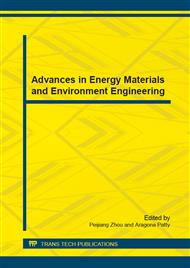p.647
p.651
p.655
p.660
p.667
p.678
p.682
p.686
p.690
Parametric Study of a Horizontal Tube Heat Exchanger for LNG Submerged Combustion Vaporiser
Abstract:
LNG (Liquefied Natural Gas) submerged combustion vaporiser is applied to convert Liquefied natural gas to gas phase natural gas through using the hot combustion gas generated from submerged combustion. This paper investigated the vaporisation and heat transfer process of a single horizontal tube, a simplified model, to simulate the heat transfer of circular tube heat exchanger used in LNG submerged combustion vaporiser. This work provides a useful computer model for the design of heat exchanger used in LNG submerged combustion vaporiser. The overall heat transfer and vaporisation process of the tube was separated into single-phase liquid, two-phase mixture and single-phase vapour heat transfer regions for calculation and analysis. Through development of a dedicated computer model, a parametric study was carried out to analyse the effects of geometrical size and operating conditions on inner surface convective heat transfer of tube. The results of study suggested that the preferable tube surface temperature for design was found between 280 K and 288 K in order to avoid frost deposition. The minimum tube length required for the overall vaporisation is predicted to be about 16 m when the inner tube diameter set between 0.24 m and 0.28 m.
Info:
Periodical:
Pages:
667-677
Citation:
Online since:
December 2014
Authors:
Price:
Сopyright:
© 2015 Trans Tech Publications Ltd. All Rights Reserved
Share:
Citation:


